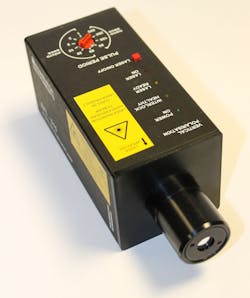Edinburgh Instruments picosecond pulsed diode laser for time-correlated single-photon counting
The EPL 515 picosecond pulsed diode laser emits at a nominal 512 nm wavelength and is optimized for time-correlated single-photon counting (TCSPC). It is pre-adjusted for an optimum pulse width of 150 ps at 10 MHz, and features 10 preset repetition frequencies from 20 KHz to 20 MHz.
Edinburgh Instruments
Livingston, England
[email protected]
More Products
-----
PRESS RELEASE
New 515 nm Picosecond Pulsed Diode Laser From Edinburgh Instruments
Edinburgh Instruments, Photonics Division, Livingston, UK, 24 November 2011; The Photonics Division of Edinburgh Instruments, has announced the availability of the EPL 515 picosecond pulsed diode laser. Emitting at a nominal 512 nm wavelength, this is the latest addition to the comprehensive range of EPL diode lasers which are optimised for Time Correlated Single Photon Counting (TCSPC).
The EPL 515 is a compact, robust, maintenance free, fully integrated system. It is pre-adjusted for an optimum pulse width of 150 ps at 10 Mhz, and features 10 pre-set repetition frequencies from 20KHz to 20MHz.
EPL diode lasers provide a cost-effective and reliable alternative to nanosecond flashlamps and expensive mode locked Titanium Sapphire femtosecond lasers. The new EPL 515 brings an additional wavelength into the range, allowing more fluorescent dyes to be excited and further extending the range of applications, which include fluorescence lifetime measurements that use TCSPC as the measurement technique.
Typical instrumentation in which the EPL 515 may be used are fluorescence lifetime spectrometers and fluorescence lifetime multiwell plate readers for spectroscopy applications in biochemistry, biology, photophysics, semiconductor physics, bio-chemical assays etc. Customised versions of the diode laser can be also supplied for integration within various types of analytical instrumentation.
